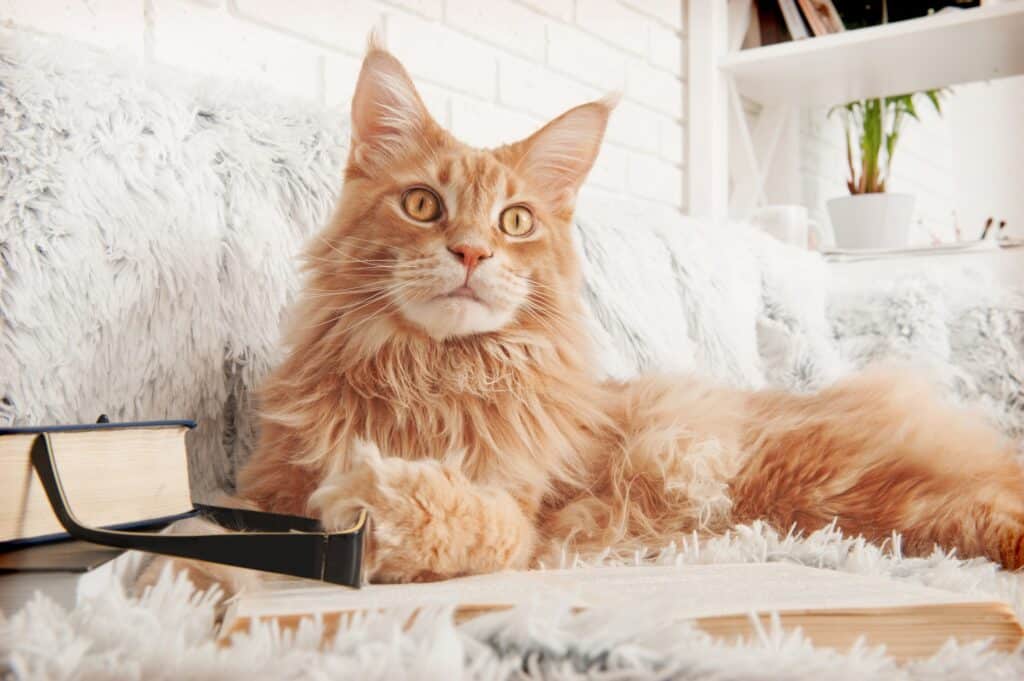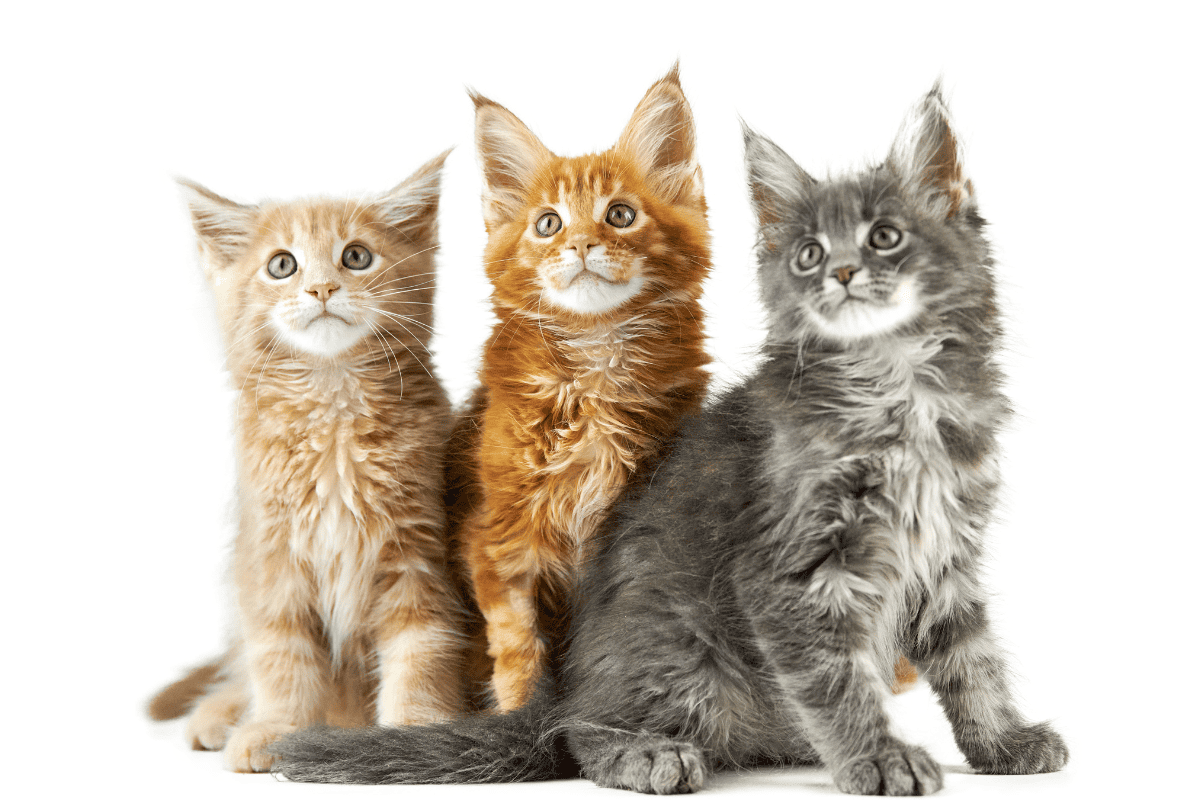There is something about orange tabby cats that draws people’s attention. They are so popular that many have found a place as cultural icons, from characters like the laid-back Garfield to the adventurous Puss in Boots.
With classic tabby patterns on a bright orange coat, they are undoubtedly eye-catching. But when you combine the orange tabby coat with a Maine Coon, the result is something truly unique!
The Maine Coon stands out as one of the most recognizable breeds of cats. But it’s not just their appearance that makes them so special. They are also known for their friendly and sociable nature, making them perfect family pets.
Often celebrated as the ‘gentle giant’ of the cat realm, they thrive in environments where they have plenty of opportunities to explore and play, showcasing their intelligence and affectionate personalities.
Join us as we explore the world of the the orange tabby Maine Coon, looking at the appealing characteristics of these large cats and the genetics behind their unique appearance.
What Is An Orange Tabby Maine Coon?
Many people think that a “tabby cat” is a distinct breed. However, the term “tabby” is a reference to a distinctive coat pattern found in cats, not a specific breed. One of the most notable feature of tabbies is that they all have a “M” on their forehead.
This pattern is highly common among various cat breeds. It is viewed as an evolutionary adaption to help cats blend in with their environment.
Purebred Maine Coon cats, known for their large size, tufted ears, bushy tails, and friendly personalities, often display tabby patterns in their coats. These patterns can range from the classic mackerel tabby to the more intricate marbled tabby, all contributing to the breed’s distinctive appearance.
Surprise Fact: Most Orange Maine Coon Tabbies Are Male
Despite the popularity of orange tabbies, surprisingly most of them are male. On average, 4 out of every 5 orange cats are are boy cats. Why is this?
The vibrant orange coat color seen in cats is the result of a specific genetic process that involves the sex chromosomes in cats. Let’s break down the genetics behind the orange coat color of Maine Coon cats:
Chromosomes and Genes: The Basics
Cats, like all living things, have chromosomes and genes that determine their traits. Chromosomes are structures within cells that carry genes, which are like tiny instruction manuals for building and operating the cat’s body.
Two Main Pigments: Eumelanin and Pheomelanin
Coat color in cats is determined by two main pigments: eumelanin (dark pigment like black and dark brown) and pheomelanin (lighter reddish-yellow pigment). Then things start to get more complicated.
The colors expressed by eumelanin and pheomelanin are modified by by other genes. In the case of orange cats, their color is determined by a specific moderator gene that is located on the X, or female-linked, chromosome.
The “O” Gene: Key to Orange
The “O” gene is the moderator that is responsible for the orange color in a cat’s fur. This gene suppresses the production of eumelanin, leaving the red color pheomelanin to shine through. If a cat inherits even one copy of the “O” gene, it will have some level of orange in its coat.
Males and Females: Different Inheritance
Here’s where things get interesting. In male cats (XY), they have only one X chromosome, so if they inherit the orange gene on that X chromosome, they’ll be orange.
In female cats (XX), they have two X chromosomes. If they inherit an orange gene on one X chromosome, then they will have some orange color but will not be all orange, since the the none-orange gene on the other X chromosome is also influencing coat color.
The female cat can only be solid color orange , or orange tabby, if it has inherited two copies of the orange gene – one from each parent.
Calico and Tortoiseshell Cats: A Twist
Female cats can display a mix of orange and non-orange colors due to the presence of both the “O” gene and non-orange genes. This is how you get calico and tortoiseshell cats with patches of orange and other colors.
Why More Male Orange Cats?
Since males have only one X chromosome, they only need to inherit one “O” gene (from their mother) to display the orange coat color,. Female cats need two orange genes (one from each parent) to be fully orange.
Statistically, it is easier for a male cat to inherit one “O” gene than it is for a female cat to inherit two, and that is why most orange cats are male.
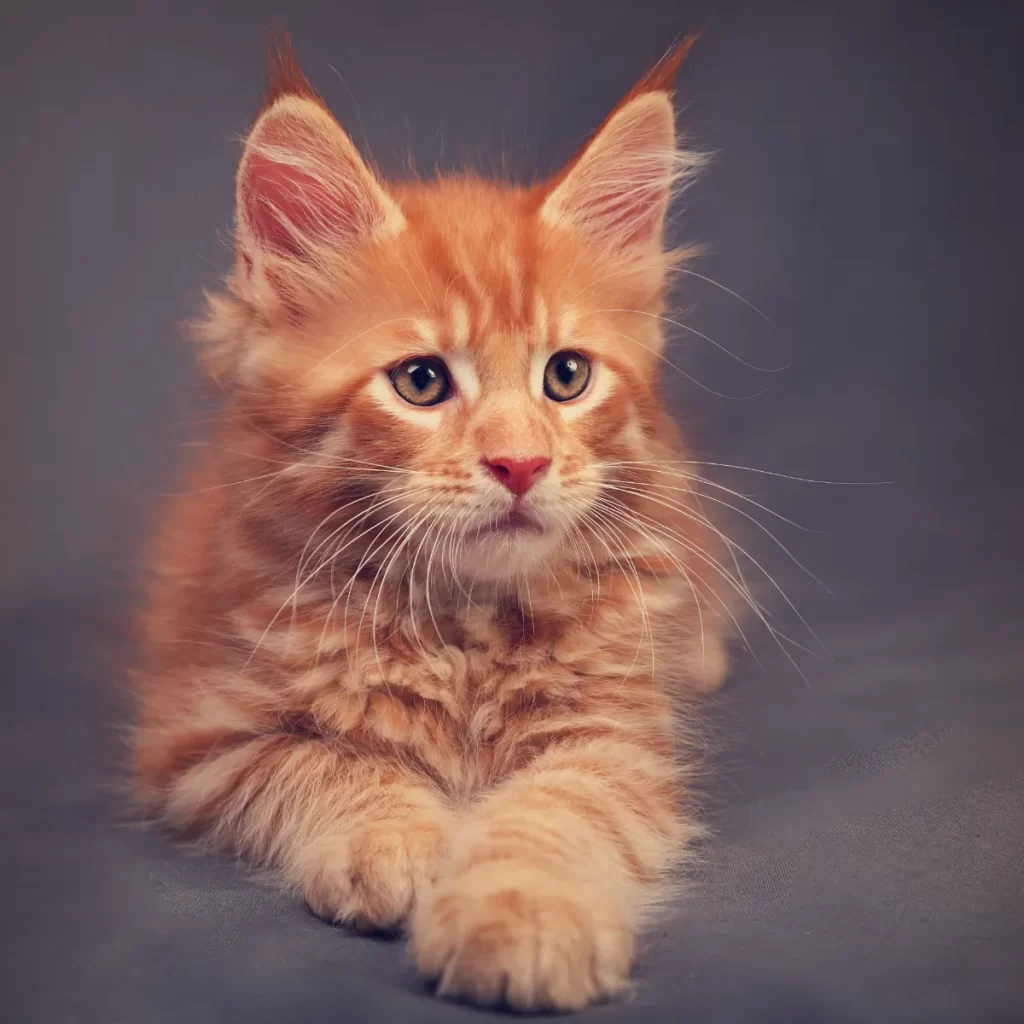
The Maine Coon Orange Tabby
Like other tabby cats, Maine Coon tabbies can come in shades of orange.
The orange tabby might be the quintessential Maine Coon color, not to mention one of the most popular amongst cat lovers. Also known as “marmalade” or “ginger” cats, orange tabbies are celebrated for their distinctive appearance that combines a striking hue with intricate tabby patterns.
Here’s a closer look at the features that define the appearance of a Maine Coon orange tabby:
Coat Color: Radiant Orange
The distinguishing characteristic of ginger Maine Coons are their vibrant orange coats. With a range that spans from rich and deep tones to lighter and more subtle shades, their coat color exhibits variability, contributing to the unique traits of every cat.
Overlaying the orange base coat are the tabby patterns that add depth and texture to their appearance. These patterns appear as the characteristic tabby stripes, swirls, or dots on the cat’s fur that are in a darker shade of orange than the base coat.
Other Features of the Orange Maine Coon Tabby
The facial features and body structure of an orange Maine Coon tabby cat contribute to its overall charm:
- Face: The face of the orange tabby often features a combination of white markings, with a white chin and possibly a white blaze on the nose. The contrast between the white and orange areas of their face enhances their expressive eyes and facial expressions.
- Eyes: The eye color of an orange tabby can vary, with shades like gold, amber, or even green. The eyes often hold a captivating intensity that complements their warm coat.
- Body: Their large size and robust, muscular bodies are some of their most distinguishing characteristics. These physical traits, combined with their dense, water-resistant fur, give them an imposing yet majestic appearance, earning them the reputation of this “gentle giant” of the cat world.
- Fur: These long-haired cats have thick and luxurious coat that serve to insulate them in cold climates. It has a silky undercoat covered by long, glossy guard hairs. Many cats have a lion-like mane due to the fullness and length of their fur. Regular grooming may be needed to keep it from matting.
- Ears: Maine Coon cats are known for their standout ears, which are large, wide-set ears with lynx-like ear tufts at the tips.
- Toes: Maine Coon’s feet are oversized and have notable tufts of fur between their toes. These large, round paws act as built-in snow shoes, providing superior traction on icy terrain. The tufts of fur between their toes offer insulation, protection, and help keep their feet clean.
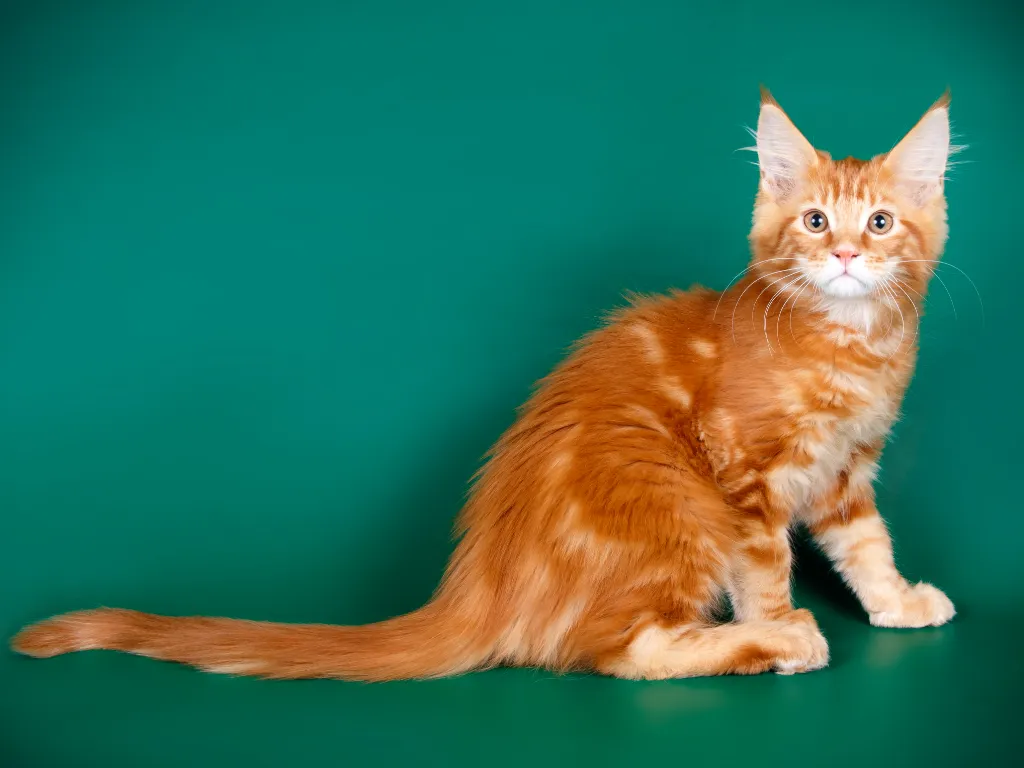
Personality
The personality of an orange Maine Coon cat is a delightful blend of characteristics that make them stand out as charming and affectionate companions. Here’s a glimpse into their personality traits:
Social and Affectionate: Orange Maine Coons are known for their friendly and sociable nature. They often seek out human interaction and are known to form strong bonds with their owners.
Playful and Energetic: Orange Maine Coon kittens have a playful streak that lasts well into adulthood. They enjoy interactive play, puzzle toys, and activities that engage their agile minds. Their energy levels can be quite high, making them entertaining and engaging companions.
Intelligent and Curious: Orange Maine Coons are smart cats with a natural curiosity. They enjoy exploring their environment, investigating new objects, and even learning tricks or commands. Their intelligence and curiosity make them excellent problem solvers.
Gentle Giants: Maine Coons tend to have a gentle and patient demeanor. They are often tolerant of children and other pets, making them a good fit for multi-pet households. Their calm and laid-back nature contributes to their reputation as “gentle giants.”
Vocal Communicators: These cats are known for their many different vocalizations, such as chirps and trills. They often use their voices to interact with their owners, especially when seeking attention or expressing their needs.
Loyal and Devoted: Orange Maine Coons often form deep bonds with their human companions. They can be incredibly loyal and devoted, following their owners around the house and enjoying being part of everyday activities.
Adaptable and Easygoing: With their adaptable nature, orange Maine Coons tend to adjust well to various living situations. They can thrive in both indoor and outdoor environments, as long as they have plenty of mental and physical stimulation.
The personality of an orange Maine Coon cat can be described as social, affectionate, and playful. These intelligent and curious creatures also have a gentle disposition. Whether you’re a family with young children, a single individual, or someone looking for a loving feline companion, they make wonderful companions.
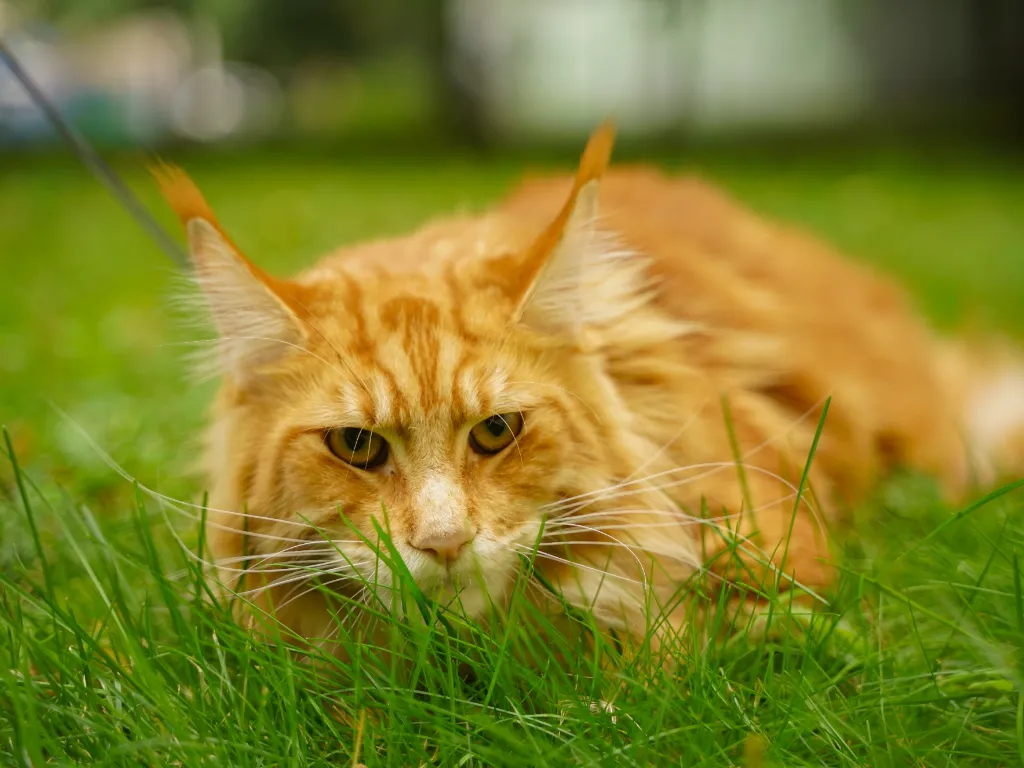
Characteristics of Tabby Coat Patterns: Stripes, Swirls, and Dots
Tabby coat patterns are known for their unique and recognizable features. These patterns appear in several forms, each with its own set of characteristics:
- Classic Tabby (Mackerel pattern): Cats with this pattern display distinct vertical stripes that run parallel down their bodies. These stripes are often accompanied by a darker line that runs down the spine, resembling a “mackerel” fishbone pattern.
- Striped Tabby (Ticked Tabby): This pattern exhibits a finely striped appearance, almost resembling the texture of brushed suede. Each individual hair strand is striped with multiple colors, giving the cat a subtle and elegant look.
- Spotted Tabby: Instead of stripes, this pattern consists of spots that vary in size, arranged irregularly across the cat’s coat. Some spotted tabbies may have larger, distinct spots, while others might have more numerous, smaller spots.
- Swirl Tabby (Marbled Tabby): Swirls and whorls create a captivating marble-like effect on the cat’s fur. The swirls may be dense or more open, resulting in a visually intricate and mesmerizing appearance.
- Patched Tabby (Tortoiseshell Tabby): This unique pattern combines the tabby markings with a tortoiseshell coloration, leading to a blend of stripes, swirls, and patches of different colors. This pattern is more common in female cats due to the genetics of coat color inheritance.
- The Classic “M”: This is the iconic “M” pattern found on the forehead of all tabby cats. The classic “M” can vary in shape and color depending on the individual cat, but it is a signature feature of tabby coat patterns.
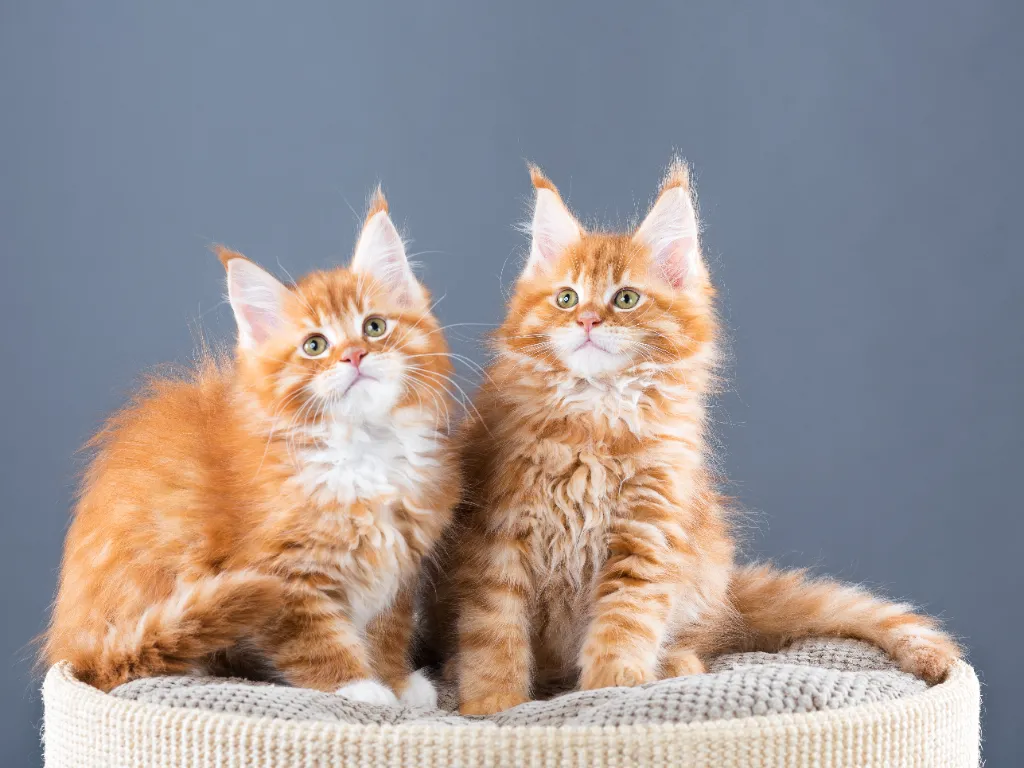
Are Orange Maine Coon Tabby Mix Cats Healthy?
These cats are generally known to be robust and healthy but, like all Maine Coon cats, they are predisposed to certain health conditions:
- Hypertrophic Cardiomyopathy (HCM): This is a common heart condition in some cat breeds, including Maine Coons. It involves the thickening of the heart muscle, which can lead to heart failure over time.
- Hip Dysplasia: Maine Coons can be susceptible to hip dysplasia, a genetic condition that affects the hip joint’s proper development. This can cause discomfort and mobility issues.
- Spinal Muscular Atrophy (SMA): SMA is a genetic disorder that affects the muscles and can lead to muscle weakness and loss. Genetic testing can help identify carriers and prevent passing on the condition.
- Polycystic Kidney Disease (PKD): PKD is a hereditary condition where fluid-filled cysts form in the kidneys, which can ultimately result in kidney failure.
- Grooming Needs: Maine Coons require regular grooming to prevent matting and hairballs. Neglecting grooming can lead to discomfort and potential health issues related to hair ingestion.
Not all Maine Coon cats will experience these health problems, and responsible breeding practices and proper care can greatly minimize the risks. Regular veterinary check-ups, a balanced diet, appropriate exercise, and attention to their specific needs can help protect the health of your Maine Coon companion.
Where To Buy A Maine Coon Tabby Mix
As advocates for rescuing animals from shelters, we always encourage adoption whenever possible. However, chances are that your local animal shelter may not have orange Maine Coon tabby mix cats available.
If you are specifically looking for a purebred Maine Coon cat, the best option is to approach a reputable breeder. While the price may seem high, Maine Coon breeders ensure that their animals undergo thorough health screenings and often provide a written health guarantee, assuring you that your kitten is free from common genetic diseases.
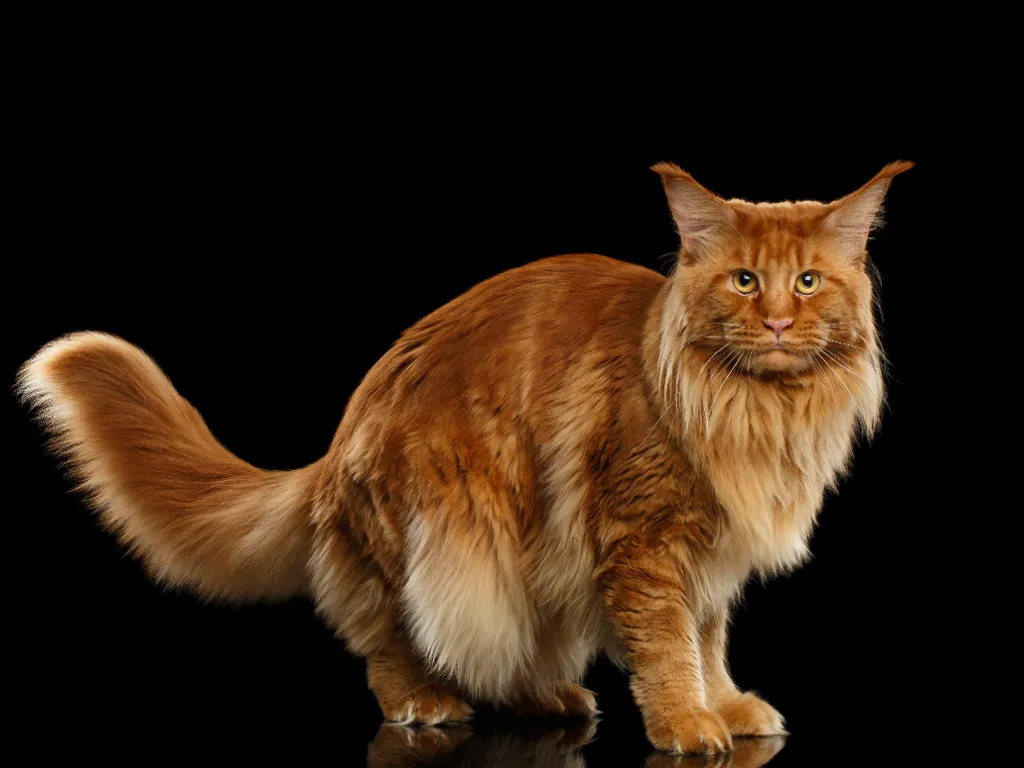
Final Thoughts
The orange Maine Coon tabby is an intriguing mix of vibrant color, captivating patterns, and robust physical attributes. Their radiant orange coat, combined with the notable tabby markings, augment their majestic persona.
The interplay of genetics behind their stunning coat color, with the majority being male due to the inheritance of the “O” gene, adds another layer of fascination.
Whether you’re already a proud owner of an orange Maine Coon tabby or considering adding one to your family, one thing is certain: your life will be filled with love and joy if you share it with one of these majestic kitties.
If you want to learn more about the Maine Coon, check out our complete breed information and care guide here.
Sources:

